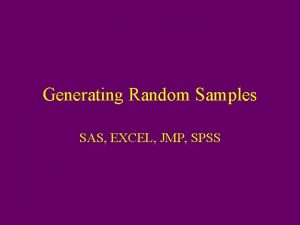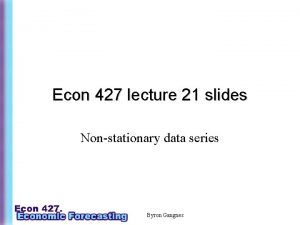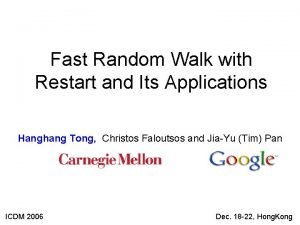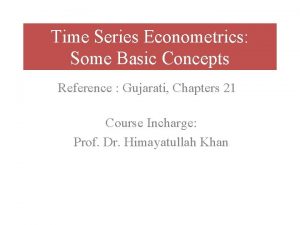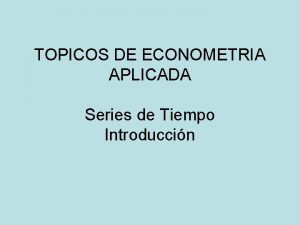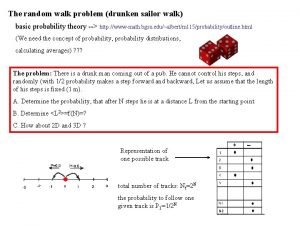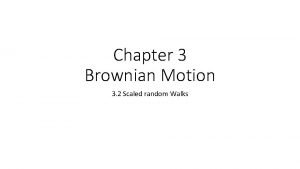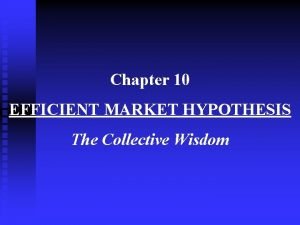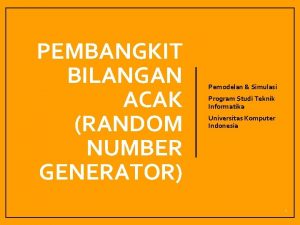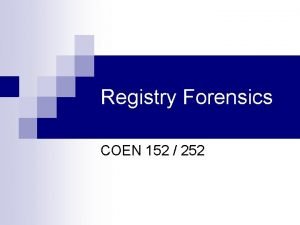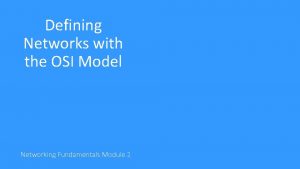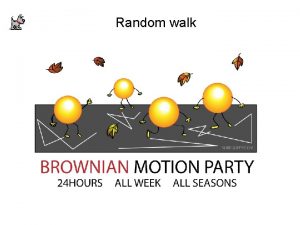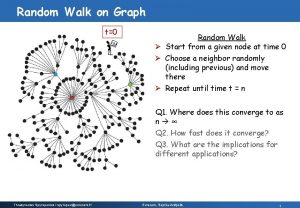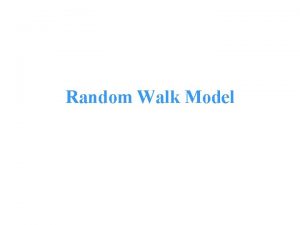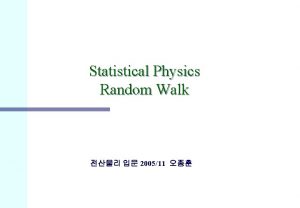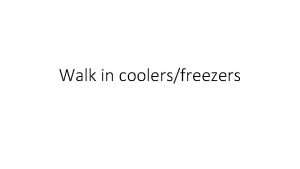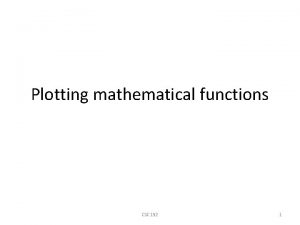Random Walk Simulation CSC 152 1 A random















- Slides: 15

Random Walk Simulation CSC 152 1

A “random walker” takes follows a path each step of which is chosen at random. CSC 152 2

A random walk is a model for Brownian motion CSC 152 3

And diffusion CSC 152 4

Set up for your simulation in Excel. If you type Sample 1 and Sample 2 in consecutive cells, highlight them and drag, Excel will update to Sample 3, etc. Make 100 samples. CSC 152 5

Enter the numbers 0, 1, …, 50 in the “number of steps” column. Also enter 0’s for the initial position of all 50 samples. CSC 152 6

Enter the formula like =F 2+RANDBETWEEN(-1, 1). The possible results of RANDBETWEEN(1, 1) are -1 which we will interpret as a taking a step to the left, a 0 which we will interpret as staying in place, and +1 which we will interpret as taking a step to the right. CSC 152 7

Copy the formula down Sample 1’s column. CSC 152 8

Copy the formula over to all of the sample column (it was column DA in the example below). CSC 152 9

The average over the samples should be close to zero because samples are as likely to move to the left as to the right. Therefore we look at standard deviation. Enter the formula to calculate the standard deviation of position over the various samples. Then copy that formula down over the various “times” (number of steps). CSC 152 10

Highlight the data (EXCLUDING the first point 0, 0) and make an XY-Scatter CSC 152 11

Choose layout #9. Choose a Power-Law fit (Trendline). Label the axes. Add a title. CSC 152 12

Compare to theory • According to theory the standard deviation should have a power of ½. • How close was your value to this prediction? • What do you think you could do to improve your results? CSC 152 13

Extrapolation • Use your formula to estimate the standard deviation after 100 steps. CSC 152 14

Calculate the skewness and kurtosis of the various samples. Then copy the formula down for the various times. This is another one of those situations which should eventually have a normal distribution. CSC 152 15
 Pagerank random walk
Pagerank random walk Jmp import excel
Jmp import excel Random walk with drift
Random walk with drift Fast random walk with restart and its applications
Fast random walk with restart and its applications Random walk with drift
Random walk with drift Random walk problem
Random walk problem Random walk econometria
Random walk econometria Random walk problem
Random walk problem Scaled random walk
Scaled random walk What is market efficiency
What is market efficiency Lognormal random walk
Lognormal random walk Quantum random number generator
Quantum random number generator Forensics
Forensics Which layer in the osi model covers http, ftp, and rdc?
Which layer in the osi model covers http, ftp, and rdc? Blending function in computer graphics
Blending function in computer graphics Hasil dari 202-152 adalah
Hasil dari 202-152 adalah

